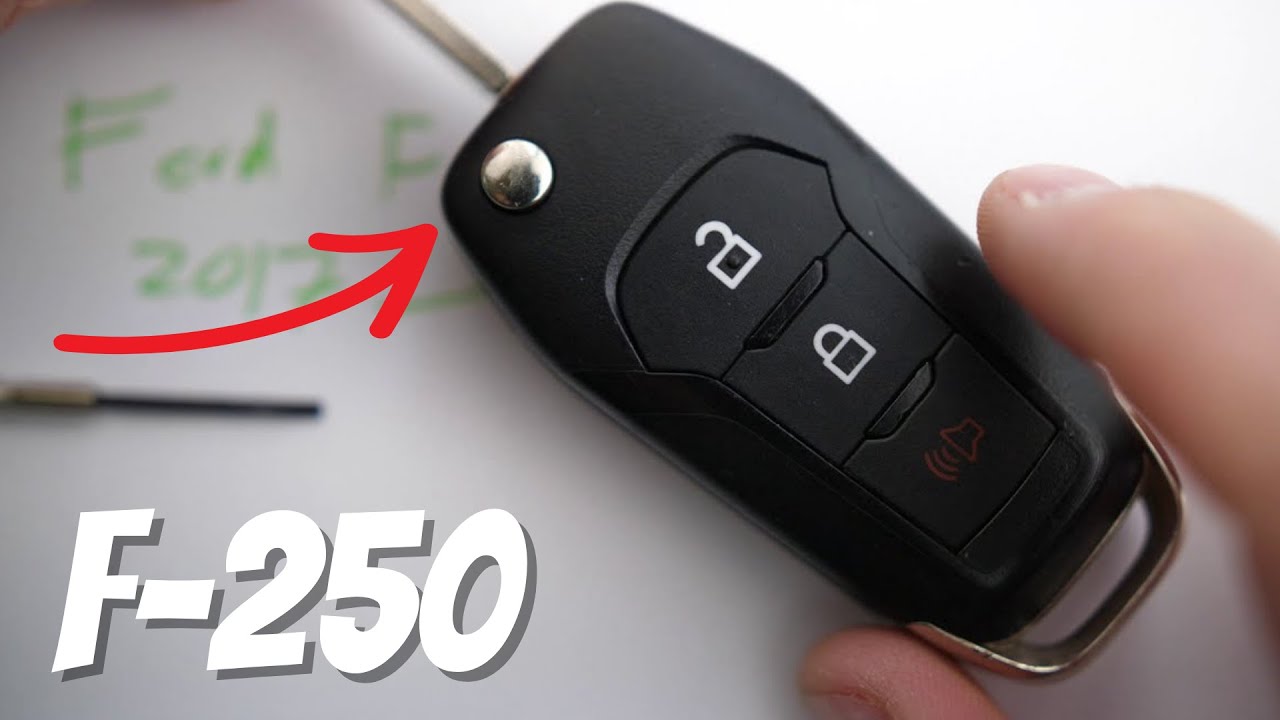Introduction
Replacing the battery in your Ford F-250 remote key fob is essential to ensure it continues to function properly. This guide will walk you through the steps to replace the battery in a 2017, 2018, or 2019 Ford F-250 key fob.
The process is straightforward and requires minimal tools. By following these steps, you can save both time and money by avoiding a trip to the dealership.
- Plastic, Metal
- Imported
- IN THE BOX: 4-pack of CR2032 3 volt lithium coin cell batteries; replacement for BR2032, DL2032, and ECR2032
Tools and Materials Needed
Before you begin, gather the necessary tools and materials. You will need:
- CR2032 coin battery
- Small flat screwdriver
Ensure you have a new CR2032 coin battery. These can be purchased online or at most electronics stores.
Step-by-Step Battery Replacement Guide
Step 1: Remove the Key
First, locate the button on your key fob that releases the key. Press this button and pull out the flip key.
This will give you access to the battery compartment.
Step 2: Locate the Indentation
Next, find the small indentation on the base of the key fob. This indentation is used to pry open the back of the fob.
It’s located about midway along the base of the fob.
Step 3: Pry Open the Back
Using a small flat screwdriver, insert it into the indentation. Apply gentle pressure to pry open the back of the key fob.
Be careful not to use too much force to avoid damaging the fob.
Step 4: Remove the Old Battery
Once the back is off, you will see the old battery. Carefully remove the old CR2032 coin battery.
Dispose of the old battery properly, following local regulations for battery disposal.
Step 5: Insert the New Battery
Take your new CR2032 coin battery and ensure the positive side is facing towards you. Place the new battery into the compartment.
Make sure it is seated properly to ensure good contact with the terminals.
Step 6: Reassemble the Key Fob
After inserting the new battery, place the back cover onto the key fob. Press down until it snaps into place.
Ensure the cover is securely attached to prevent it from falling off.
- Plastic, Metal
- Imported
- IN THE BOX: 4-pack of CR2032 3 volt lithium coin cell batteries; replacement for BR2032, DL2032, and ECR2032
Testing the Key Fob
Once you have replaced the battery, test the key fob to ensure it is working correctly. Try locking and unlocking your vehicle.
If the key fob does not work, double-check the battery orientation and ensure the back cover is properly attached.
Additional Tips
- Keep a spare CR2032 battery on hand.
- Replace the battery every 1-2 years.
- Avoid using excessive force when prying open the fob.
Frequently Asked Questions
What type of battery does the Ford F-250 key fob use?
The Ford F-250 key fob uses a CR2032 coin battery. This is a 3-volt battery commonly found in many electronic devices.
- Plastic, Metal
- Imported
- IN THE BOX: 4-pack of CR2032 3 volt lithium coin cell batteries; replacement for BR2032, DL2032, and ECR2032
How often should I replace the key fob battery?
It is recommended to replace the key fob battery every 1-2 years. However, if you notice the range of your key fob decreasing or it stops working altogether, it may be time for a replacement.
Can I use a different type of battery?
No, you should only use a CR2032 coin battery. Using a different type of battery may damage the key fob or cause it to malfunction.
What should I do if the key fob still doesn’t work after replacing the battery?
If your key fob still doesn’t work after replacing the battery, double-check the battery orientation and ensure the back cover is securely attached. If it still doesn’t work, there may be an issue with the key fob itself, and you may need to contact a professional for further assistance.
Conclusion
Replacing the battery in your Ford F-250 key fob is a simple process that can be done in a few minutes. By following the steps outlined in this guide, you can ensure your key fob remains functional and reliable.
Regular maintenance of your key fob, including timely battery replacements, will help you avoid inconveniences and keep your vehicle secure.
Thank you for following this guide. If you have any further questions or need additional assistance, feel free to reach out.


